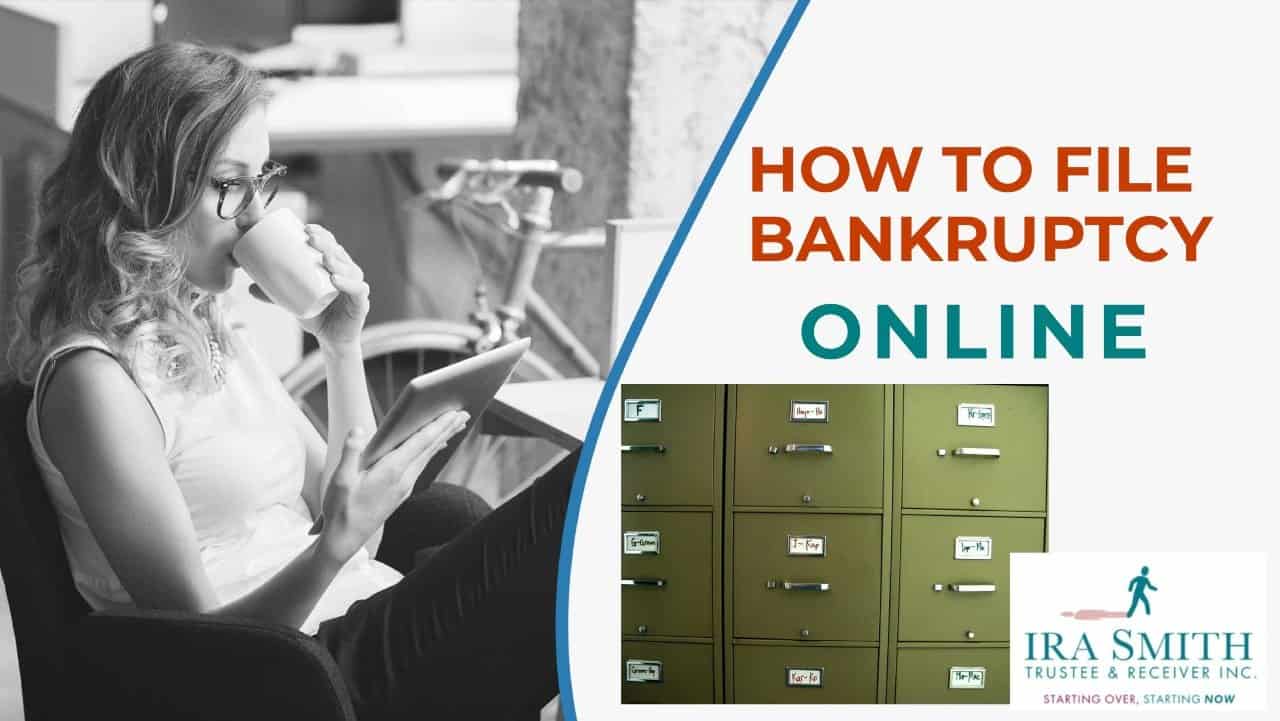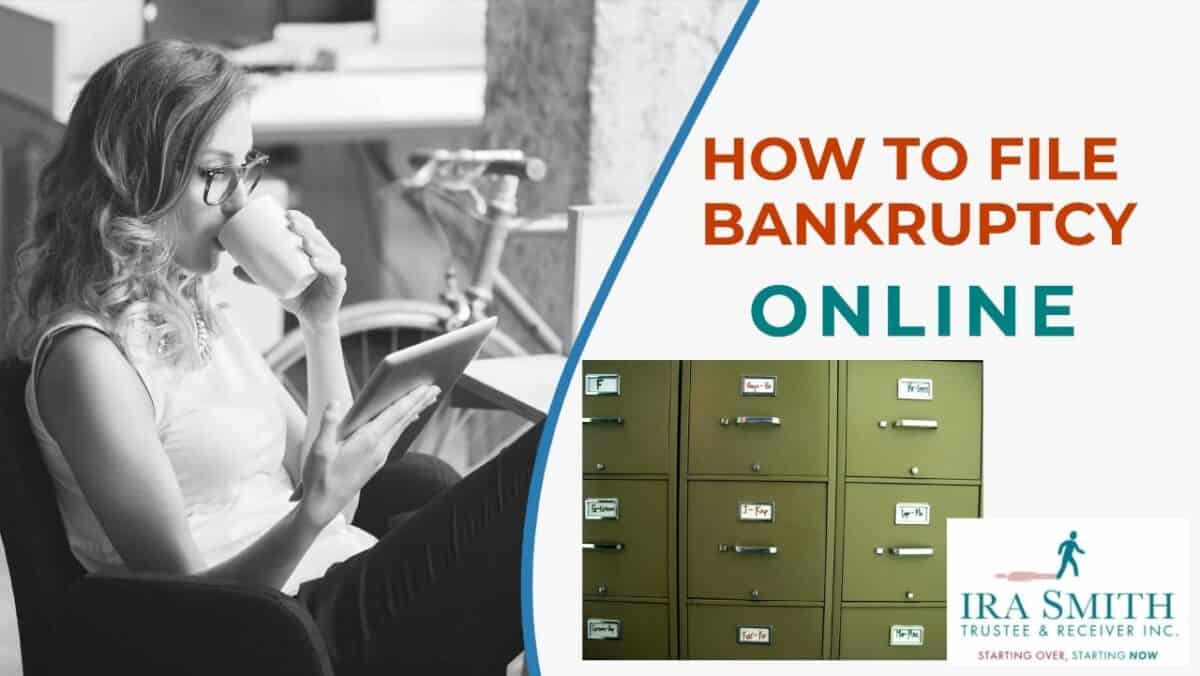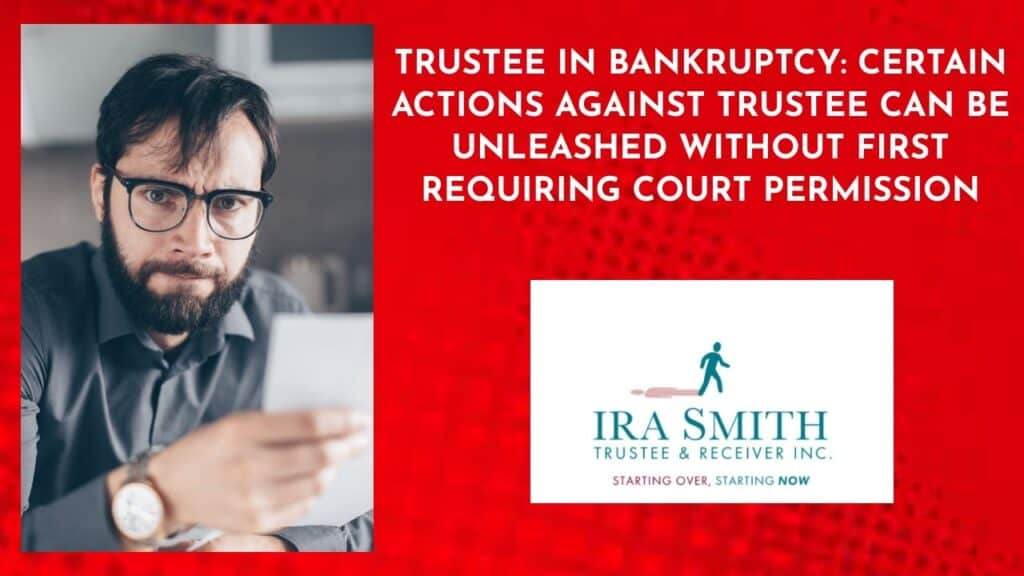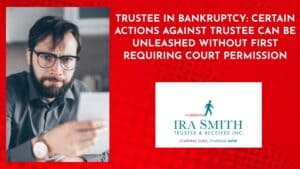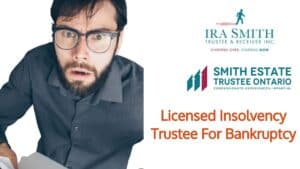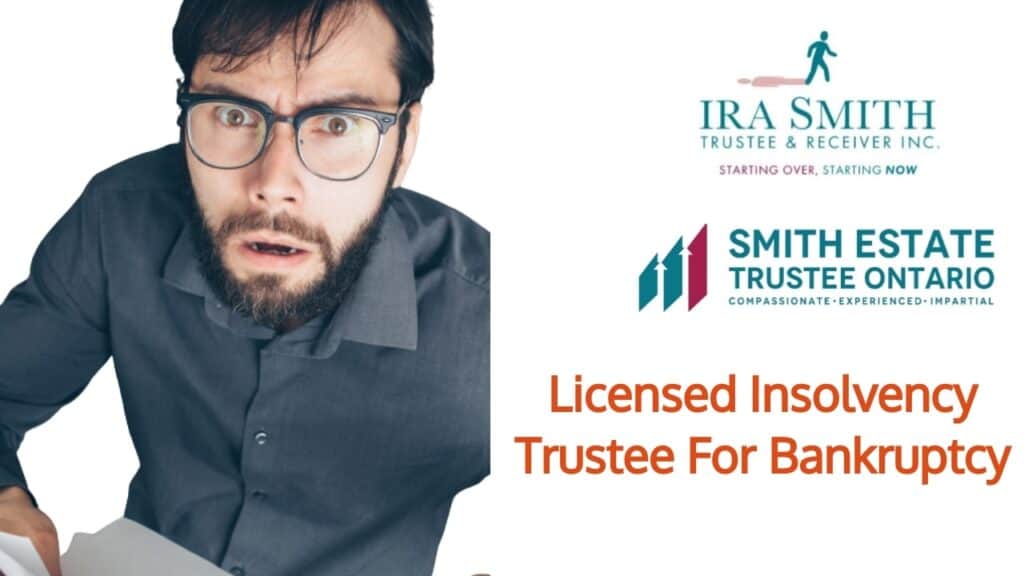File bankruptcy online: You can file bankruptcy online in Canada!
Can I file bankruptcy online in Canada? This is a question we’ve been getting a lot lately. And the answer is yes, you can file bankruptcy online in Canada; just not by yourself.
The only ones the federal government authorizes in Canada to do bankruptcy filings are licensed insolvency trustees. Since March 2020, the process for meeting with a bankruptcy trustee to discuss bankruptcy has changed and can be done online. This may be helpful if you’re considering bankruptcy for your individual situation.
In this Brandon’s Blog, I explain how, with the help of a licensed insolvency trustee, you can meet all the legal requirements and file bankruptcy online for the Canadian bankruptcy process.
Why you can file bankruptcy online in Canada
There’s virtually nothing you can’t do online these days. The lockdowns increased our reliance on online shopping for things like groceries, clothes, office supplies, and even toilet paper.
The internet also includes a wealth of knowledge on any subject you can think of, including financial topics. I find that anyone contacting me who is struggling with their, or their company’s financial problems, has already looked into the various options available to them in dealing with debts like income taxes and credit cards.
Although people may not be familiar from their online research with all the ins and outs of insolvency and bankruptcy, this is to be expected. However, callers are generally well-informed about different options for dealing with secured creditors and unsecured creditors.
Nowadays, people expect to be able to do everything online – including filing for bankruptcy in Canada. Those who think bankruptcy might be a solution for them, are curious to understand if they can declare bankruptcy online. Thanks to the COVID-19 pandemic, online everything is a way of life.
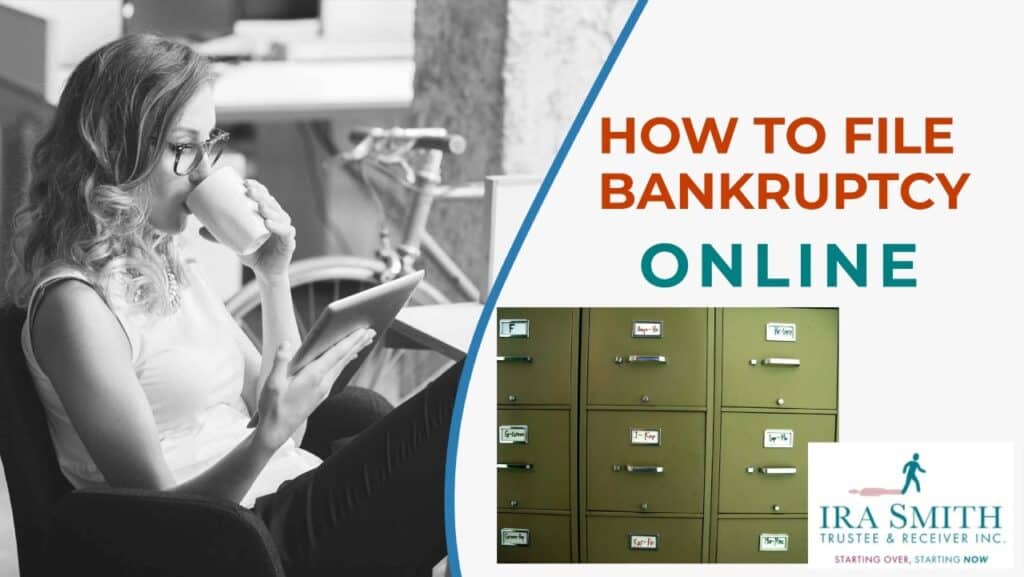
Why you should file bankruptcy online
The Canadian government oversees the administration of the insolvency process in Canada through the Office of the Superintendent of Bankruptcy Canada (OSB). The OSB is part of Innovation, Science and Economic Development Canada (Industry Canada). They ensure that consumer proposals, corporate financial restructuring and bankruptcies are handled in accordance with federal law. This process protects the rights of both debtors and creditors and helps to ensure a fair and orderly resolution to financial difficulties.
The OSB is responsible for administering Canadian bankruptcy law under the Bankruptcy and Insolvency Act (BIA), as well as certain duties under the Companies’ Creditors Arrangement Act (CCAA). They license and regulate the insolvency profession, ensure an efficient and effective regulatory framework, and supervise stakeholders. The OSB is independent of the Government of Canada in carrying out its regulatory, administrative, and supervisory duties.
As a result of the outbreak of COVID-19, the OSB issued guidance to Trustees on how certain aspects of the Canadian bankruptcy and insolvency process have changed. This document, entitled Temporary Guidance for LITS During the COVID-19 Pandemic, provides direction on how to navigate these changes.
As concerns about COVID-19 grew in Canada, licensed insolvency trustees took action to reduce in-person meetings. The OSB supported the Trustee community in these initiatives while maintaining the stability of Canada’s insolvency system.
Many of the same temporary measures remain in place today. Most clients find it more convenient and less stressful to continue filing for bankruptcy online. So how do we file bankruptcy online in Canada?
Assessing your financial situation and considering bankruptcy alternatives
No matter what form of insolvency process we are discussing to deal with a specific debt situation calling for either financial restructuring with a debt settlement payment plan through a consumer proposal or Division I Proposal, or personal bankruptcy, the process always starts in the same way. It’s not important what type of bankruptcy or insolvency process we’re talking about if we are dealing with a limited liability company or with someone considering bankruptcy for individuals.
When it comes to corporate insolvency, it’s important to have a clear understanding of the company’s current financial position and what its chances are for a successful financial restructuring. In consumer insolvency cases, the first step is to assess the debtor’s individual situation.
When a person contacts me to discuss their personal financial situation, we would have our initial chat. If the person wished to explore their available options in more detail, I would need to collect additional information from them to enable a proper assessment. Before we discuss which actual filing may be appropriate, it is important for me to know things like their assets and liabilities, their monthly income, and their household size.
If they would like me to continue our no-cost consultation and provide them with a proper assessment, I email them our standard intake form called the Debt Relief Worksheet. I ask them to please make sure to fully complete it and include any backup documents that are requested.
The backup documents we typically request are quite standard – a copy of their most recent bank statement, their last filed tax return, and the notice of assessment. Once I have a chance to review everything and ask any follow-up questions, I’ll be able to provide tailored advice based on their unique situation.
The counseling before filing bankruptcy that we give is perhaps even more important than any counselling sessions after filing. So far, we’ve been able to do everything over the telephone and online.

Is filing bankruptcy online an option for getting rid of debt?
Now that I have all the necessary information, I can perform the rest of the initial assessment. There could be several options available for those struggling with debt, and filing for bankruptcy may be an option for some. However, it’s important to understand the process and what it entails before making a decision.
Continuing with the online model, I meet with the person and do the rest of the assessment by phone or video meeting. I explain what I see as the realistic debt relief options for the person, explain why and discuss what is involved with each option and answer any questions they may have.
At the end of the meeting, I provide the person with a list of resources that can help them make their decision. I’m always available to answer any questions they may have throughout the process. Filing for online bankruptcy may very well be an option for getting rid of debt, but it should be the last option.
Something else to remember is that an insolvency proceeding will lower your credit score as it appears on your credit report. Declaring bankruptcy will have a worse effect than a debt management plan through a BIA-approved financial debt restructuring program repayment plan.
What documents do you need in order to file bankruptcy online?
To discuss what documents you need for a bankruptcy application in order to file bankruptcy online in Canada, we will assume that the person chose the bankruptcy option. By now, I have enough financial information to prepare all the necessary bankruptcy documents.
Examples of statutory bankruptcy forms which are part of the bankruptcy paperwork include the:
- statement of affairs, indicating both the person’s eligible assets and those exempt from seizure under provincial law with related bankruptcy schedules;
- list of creditors that is used for the creditor mailing list to send out the notice to creditors;
- person’s statement of monthly income and expenses;
- bankruptcy assignment
- notice to bankrupt of their bankruptcy duties; and
- estate information summary.
We schedule a video meeting with the debtor once all the statutory and financial documents are ready for signing. We can either email the documents or upload them to our secure signing portal and provide the debtor with a private, secure link. We’re happy to use online technology to have our meeting and explain all the documents, witness their signing, and get the signed documents from them.
We take the signed documents and file them in the Industry Canada OSB electronic online filing system. The OSB issues the bankruptcy certificate once the electronic filing is accepted. The day and time of the certificate is the exact moment the person is officially bankrupt.

Duties during bankruptcy include credit counselling sessions
The duties of a bankrupt person are set out in section 158 of the BIA. They include:
- to identify all of their property and allow the Trustee or anyone authorized by the Trustee to take possession of all the debtor’s property;
- to give the Trustee all books, records, documents and papers related to their property or affairs, including, but not limited to, title papers, insurance policies, and tax records and returns;
- providing full disclosure of all assets and liabilities;
- helping the trustee when required with assistance from time to time;
- if one or more creditor meetings are required, you must attend; and
- attending the two mandatory bankruptcy credit counseling sessions run by the Trustee.
We can meet with the bankrupt person over video meetings to provide counselling sessions and help them to fulfil their online bankruptcy duties.
Is it always going to be possible to file bankruptcy online in Canada?
The OSB has extended the option to conduct online service delivery of the Canadian insolvency options available under the BIA. Licensed insolvency trustees can continue to use online methods. It has provided some peace of mind for many people.
The OSB has been consulting with the insolvency community on potential amendments to relevant directives, with the goal of implementing an online alternative to meeting in person. While allowing flexibility, the changes they are contemplating would emphasize that while trying to be flexible, the changes being contemplated would emphasize that debtors will have the choice to either meet in person or online.
It looks like the OSB is warming up to the idea that remote filing through online resources, whether we are talking about BIA-approved debt repayment plans or bankruptcy may very well be here to stay. The OSB is trying to balance the benefit to debtors as well as the bankruptcy process continuing to be for the benefit of creditors. Can it all continue to be accomplished by online resources and technology? So far the average person, be they Canadian debtors or Canadian creditors, seem to want to continue with the choice of having insolvency administration online.

Are you deep in debt? We can help!
I hope you enjoyed this Brandon’s Blog on how to file bankruptcy online. Are you or your company in need of financial restructuring? Are you or your company unable to survive the COVID pandemic and its aftermath? The financial restructuring process is complex. The Ira Smith Team understands how to do a complex restructuring. However, more importantly, we understand the needs of the entrepreneur or the person who has too much personal debt. You are worried because you are facing significant financial challenges.
It is not your fault that you are in this situation. You have been only shown the old ways that do not work anymore. The Ira Smith Team uses new modern ways to get you out of your debt troubles while avoiding bankruptcy. We can get you debt relief freedom.
The stress placed upon you is huge. We understand your pain points. We look at your entire situation and devise a strategy that is as unique as you and your problems; financial and emotional. We know that we can help you the way we take the load off of your shoulders and devise a debt settlement plan.
We realize that people and businesses in financial difficulty need practical advice and a workable solution in an easy-to-understand financial plan. The Ira Smith Team knows that not everyone has to file for bankruptcy in Canada. Most of our clients never do, as we are familiar with alternatives to bankruptcy. We assist many people in finding the relief they need.
Call or email us. We can tailor a new debt restructuring procedure specifically for you, based on your unique economic situation and needs. If any of this sounds familiar to you and you’re serious about finding a solution, let us know.
Call us now for a no-cost initial consultation.
